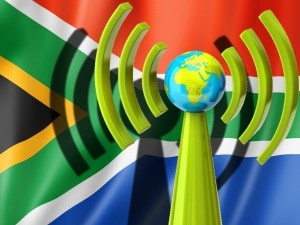
Local area wireless technology WiFi is increasingly becoming a solution for operators that have no choice but to adapt to high data consumption.
This follows a profusion of first-timers coming on board the mobile Internet train via low-cost smartphones this year, and new generation technology like long-term evolution (LTE) starting to gain momentum.
Local governments, telcos and international players are all starting to invest in WiFi in SA, with the technology nearing a tipping point, according to experts.
Michael Fletcher, sales director for Ruckus Wireless sub-Saharan Africa, notes the region's unique mobile subscriber base has grown by 18% annually over the last five years, making it the fastest growing region globally.
"By mid-2013, there were 253 million unique mobile subscribers and 502 million connections. What's more, it is estimated that mobile data consumption in sub-Saharan Africa has doubled between 2012 and 2013, and will nearly double year-on-year for most of the next six years."
Fletcher says, while this presents an opportunity for companies to leverage WiFi to bridge the transition to ever higher data demand, consumers who are just entering the fray need to be educated on how to take advantage of both higher cellular access speeds and the growing prevalence of WiFi hotspots.
Operator initiatives
Average global smartphone usage growth is on the rise, with social networking, research, video and music streaming driving users' appetites.
World Wide Worx MD Arthur Goldstuck says while the digital divide might be able to be addressed with more cost-effective mobile devices, the data divide remains - that is, the inability of users to effectively get the data via current cellular technology alone.
Mobile operators are working on addressing this. Over a year ago, Telkom Mobile started offering customers on certain of its plans unlimited WiFi, while Vodacom in April launched G-Connect WiFi bundles to enable prepaid, TopUp, uChoose and contract customers to connect to more than 1 500 hotspots throughout SA.
More recently, MTN started a project with City Power, using streetlights to address data dearth - although this has been opposed. The operator is continuing to work on overcoming hurdles so it can continue to rollout streetlight base stations for local area solutions.
According to the Independent Communications Authority of SA, and scores of consumer complaints, SA's mobile network quality has degenerated considerably this year, despite new technologies and creative solutions that are emerging to address this issue.
Fletcher says, while WiFi access is not a solution for replacing mobile data, it provides a complementary service that enhances the connected experience. "Savvy users are using WiFi connectivity at the office or at restaurants and coffee shops to download updates and for more data-intensive needs, as WiFi excels at providing capacity in high-density indoor locations like these."
Mobile access contributes over 6% of the region's gross domestic product, says Fletcher, higher than any other comparable region globally. "This is forecast to rise to over 8% by 2020."
As mobile operators are looking at ways to further diversify their offering with partnerships with over-the-top content providers, consumers across the continent are able to get the best of all worlds through the use of WiFi connectivity in conjunction with cellular. "Given the estimates of mobile data growth over the coming years, this creates a beneficial environment for everyone and something that is exciting to be a part of," concludes Fletcher.
Share